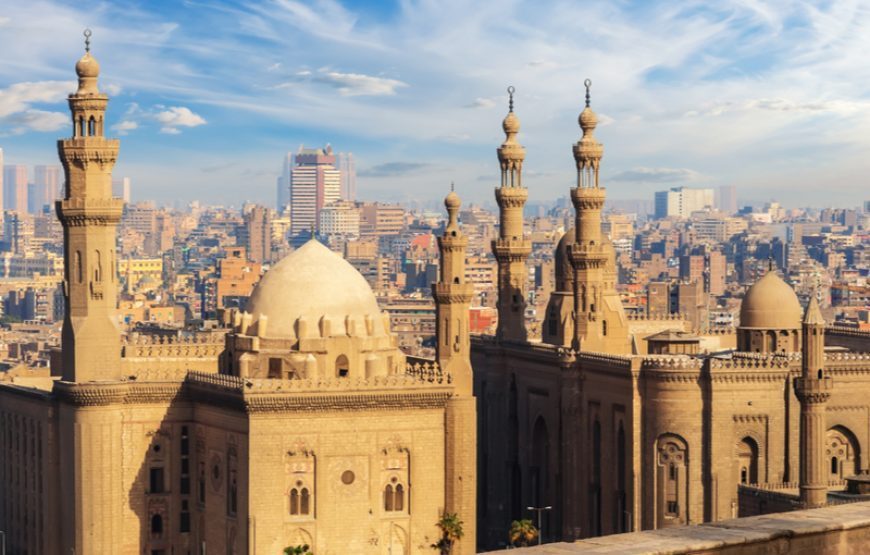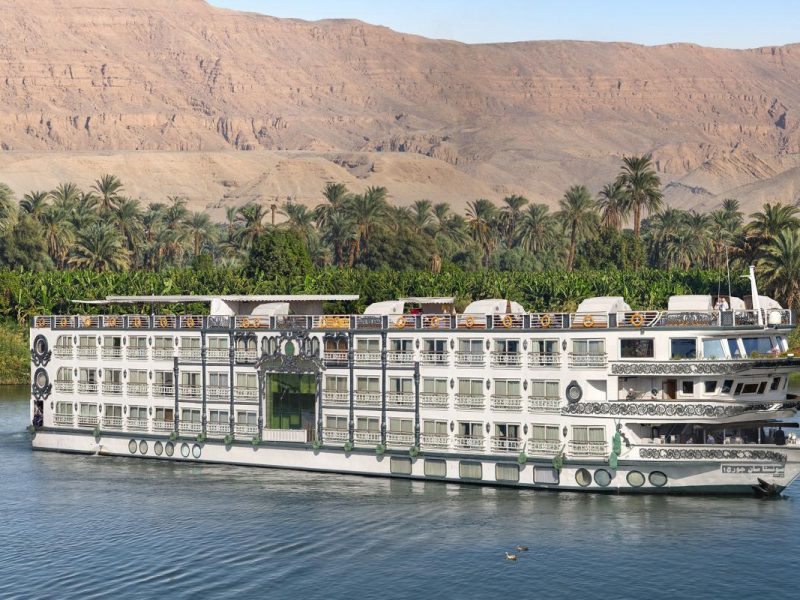After breakfast, we start our detailed tour to the Islamic Cairo with the pick-up from your accommodation in Cairo. Our first attractive destination of this Cairo Tours in the Islamic Quarter Cairo is the impressive
Saladin Citadel – Alabaster Mosque
Saladin Citadel, one of the best-preserved fortresses, was built on a hill, the so-called Mokkatam Plateau and offers you an overview of a large part of the city. With good visibility, you can sometimes even see the Pyramids of Giza. Located below the fortress are the Sultan Hassan Mosque and the Ibn Tulun Mosque, also parts of the Cairo Islamic Center.
Mosque of Muhammad Ali (Alabaster Mosque)
After an explosion in the ammunition dump in 1824 destroyed parts of the citadel, Muhammad Ali built a large Mosque in the destroyed area of the citadel. His son Said Pasha completed the construction until completion in 1857. Not far from the Saladin Citadel is something that no one in the metropolis of Cairo would suspect, the “Green Lung” of Cairo, the Al Azhar Park, where the residents of Cairo try to escape the hustle and bustle of the city at the weekends.
After taking in the beautiful view over Cairo, we leave the Mokkatam Plateau to visit the Museum of Islamic Art Cairo.
Museum of Islamic Art Cairo
This Museum is famous for its collection of rare manuscripts of the Quran with wonderfully calligraphies and a wide variety of rare artefacts made out of materials like wood or metal and textile objects from all over the Islamic world. After a complete restoration for around $ 10 Million in 2010, the Museum of Islamic Art Cairo shines in new splendour. After visiting the Museum, we will take a lunch break in one of Cairo's traditional restaurants before we continue our Cairo tours to the unique
Sultan Hassan Mosque
The Sultan Hassan Mosque, also known as the Madrasa Mosque, stands in the shadow of the impressive Saladin Citadel. But with its architecture based on the model of the Mamluks (Sultan Hassan was the son of the Mamluk Sultan al-Nasir Muhammad ibn Qalawun), it's an imposing building.
To this day, the Sultan Hassan Mosque is considered one of the most valuable monuments in Egypt and is, next to the Pyramids of Giza as witnesses of the pharaonic times, a witness of ancient Islamic Egypt.
It received the name Madrasa Mosque (school mosque) from the teaching areas divided into 4 schools of Sunni Islam (Hanafi, Malaki, Hanbali and Shafi'i). The Mosque also offers accommodation for 500 students and teachers.
Ibn Tulun Mosque
The Ibn Tulun Mosque is one of the oldest mosques and in terms of the area the largest in Africa. To this day it has been preserved in its original form and was built in this size to accommodate the entire troops of Ibn Tulun for Friday Prayer. Its Minaret, one of the famous Cairo landmarks has a special feature, it is surrounded by a spiral staircase that winds on the outer walls up to the top. We leave the Ibn Tulun Mosque for the drive to the
Cairo City Walls
The historic Cairo city walls were built to protect against the growing threat from the Ottoman Empire. It contains three famous gates,
the Bab al-Futuh city gate and the Bab El Nasr city gate, both built in 1087 and the Bab Zuwayla gate, built-in 1092. The Bab al-Futuh and the Bab Zuwayla gate form the end of the famous Al Muizz street, which connects the northern and southern border of Cairo. You will notice that the construction with the semicircular arches is very unusual compared to buildings from the same period and only reappears two centuries later due to the influence of Syrians. The Al Hakim Mosque, which was originally built outside the city walls, is now enclosed by the walls that extend between Bab al-Futuh and Bab al Nasr.
With a visit at the historical Cairo city walls you will see one of the largest fortifications that was built in the time of the Crusades. We have reached the end of our Islamic Quarter Cairo tour and from here we will accompany you back to your accommodation in Cairo.







